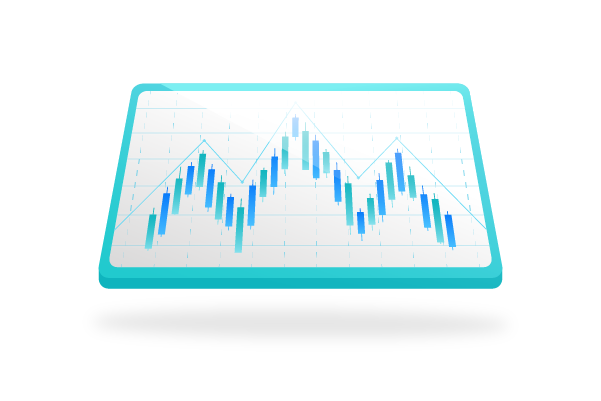Forex scalping is a popular trading strategy used by many to gain quick profits by entering and exiting the market swiftly. This method focuses on making numerous trades throughout the day, capitalizing on small price movements. Often, scalpers aim to gather a series of small wins into a substantial cumulative gain by the day’s end. Ideal for those who can dedicate time and attention to their trading platforms, scalping requires not only speed but also a disciplined approach to managing risks.
In this guide, we will explore the ins and outs of scalping, starting with the basic concepts and moving on to the tools and strategies used by successful traders. Whether you’re a complete novice in the Forex market or looking to refine your trading techniques, this guide aims to equip you with the knowledge to start scalping effectively.
Table of Contents
ToggleWhat is Scalping?

Forex scalping is all about speed and precision. As a scalper, your goal is to spot opportunities for small price changes and act on them quickly before they disappear. This requires a deep understanding of market conditions and the ability to make fast decisions.
Key Concepts in Scalping:
- Bid-Ask Spread: This is the difference between the highest price a buyer is willing to pay (bid) and the lowest price a seller is willing to accept (ask). Scalpers look for narrow spreads to minimize costs and maximize profits on small price movements.
- Liquidity: High liquidity is crucial for scalping because it ensures that trades can be executed quickly and at predictable prices. Major currency pairs, like EUR/USD or USD/JPY, often provide the best liquidity.
- Leverage: While leverage can increase the potential profits from small price movements, it also increases risk. It’s important for scalpers to use leverage wisely to manage their risk exposure effectively.
- Market Timing: Scalpers must know when to trade. High volatility periods, such as during major economic announcements or when multiple markets are open simultaneously, can present the best opportunities for quick profits.
Read More: What Is Forex? A Comprehensive Introduction
Scalping is not just about executing trades but also about strategic planning and precise timing. It demands constant market analysis and the ability to remain calm under pressure. Next, we’ll look into the essential tools and indicators that can help you become a successful scalper.
Tools and Indicators Essential for Scalping
Successful forex scalping depends heavily on utilizing a combination of advanced tools and precise technical indicators. These resources help scalpers quickly analyze the market and execute trades with efficiency.
Essential Tools for Scalpers:
- Trading Platforms: For scalpers, a trading platform that offers fast order execution is crucial. MetaTrader 4 (MT4) is favored for its user-friendly interface, customization options, and advanced charting capabilities. cTrader is another popular choice, known for its ultra-fast trade execution and direct access to currency exchange rates without dealer intervention.
- Charting Software: Immediate access to updated price charts is critical for making decisions in moments. Advanced charting software provides features like real-time data streaming, a variety of pre-installed indicators, and tools for technical analysis, which are indispensable for tracking very short-term patterns like price ticks and minute fluctuations.
Key Indicators Used in Scalping:
- Moving Averages: A fundamental tool in a scalper’s arsenal, moving averages help in smoothing out price data to identify the trend direction quickly. Scalpers might use exponential moving averages (EMAs) for more responsiveness. Short periods such as the 5-EMA or 10-EMA are typical to capture the most immediate price movements.
- Stochastic Oscillator: This momentum indicator is crucial for identifying potential reversal points by comparing the closing price of a currency pair to its price range over a given timeframe. Scalpers use this to determine entry and exit points during volatile market conditions, particularly in overbought or oversold situations.
- MACD (Moving Average Convergence Divergence): MACD is effective for spotting changes in momentum, direction, and duration of a trend in a currency’s price. Scalpers look at the MACD histogram for rapid changes that hint at trading opportunities.
- RSI (Relative Strength Index): The RSI helps scalpers identify the speed and change of price movements. Typically set at a shorter period (like 14), it can indicate potentially overbought or oversold conditions in the market, suggesting optimal times for entry or exit.
Furthermore, the combination of these tools and indicators, along with a disciplined approach to risk management, can significantly increase the probability of successful trades. Many scalpers also use price action techniques, watching for specific patterns like spikes and rapid reversals that indicate immediate entry or exit points.
Step-by-Step Guide to Your First Scalping Forex

Scalping in the forex market is a strategy that requires meticulous planning and swift execution. Here’s an expanded guide to help you conduct your first scalp trade effectively.
1. Set Up Your Trading Environment
- Choose a Reliable Broker: Selecting a broker that facilitates scalping is essential. Look for features such as ultra-low spreads, rapid order execution, and no restrictions on trading around news events.
- Equip with Necessary Tools: Equip your trading setup with advanced charting software capable of real-time data streaming. Make sure your internet connection is stable and fast to avoid delays in trade execution.
2. Select Your Currency Pair
Choose High Liquidity Pairs: Scalping usually works best with highly liquid currency pairs. Examples include EUR/USD, USD/JPY, and GBP/USD. These pairs typically have the tightest spreads and ample movement, which are critical for the small price changes scalpers capitalize on.
3. Determine the Trading Session
Opt for High Activity Periods: The best times for scalping are when the trading sessions overlap, such as the New York-London overlap. These periods feature heightened volatility and trading volume, creating more opportunities for scalping.
4. Apply Technical Indicators
- Set Up Indicators: Customize your trading platform to display several quick-reference indicators. These might include short-term moving averages, the stochastic oscillator for momentum tracking, and the MACD for identifying trend changes.
- Analyze the Charts: Develop a knack for reading signals from your indicators quickly. For example, a moving average crossover might indicate an entry point, while an exit signal could be from an RSI reaching overbought levels at 70 or above.
5. Plan Your Trade
- Determine Entry and Exit Points: Use your analysis to set precise entry and exit points. In scalping, even a few pips can make a difference, so precision is key.
- Set Stop-Loss Orders: Implement tight stop-loss orders to protect against sudden market moves. Unlike other trading styles, scalping requires very tight control over losses since the profit margins are often just as narrow.
6. Execute the Trade
- Monitor the Market Closely: Stay focused on your trading platform as long as you have open positions. Scalping demands constant attention because you might need to exit a trade within minutes or even seconds.
- Quick Decision Making: Be decisive about closing out a trade, whether it’s to capture a small gain or cut a loss. The fast-paced nature of scalping doesn’t afford the luxury of pondering decisions.
7. Review and Learn
- Record Your Trade: Keep a detailed log of each trade, noting the strategy used, entry and exit points, market conditions, and the outcome. This log will be invaluable for analyzing your trading strategies and making adjustments.
- Evaluate Performance: Reflect on each trade to understand what worked well and what didn’t. Continuous learning and adaptation are crucial in scalping due to the rapid pace and frequent changes in forex markets.
Common Mistakes in Scalping and How to Avoid Them

Scalping in the forex market is a high-intensity trading strategy that can quickly yield profits but also comes with its share of pitfalls that can undermine those profits. One major mistake is overtrading, where the allure of quick profits leads traders to make more trades than their strategy supports, often diluting focus and increasing exposure to risk.
It’s essential to establish strict trading limits to prevent this, including a maximum number of trades per session and set risk levels. Transaction costs are another critical consideration; these can accumulate rapidly with the high volume of trades typical in scalping, significantly impacting net profitability. Choosing a broker that offers low spreads and commissions is crucial, as is keeping meticulous records of these costs.
Moreover, the absence of a solid, tested trading strategy is a common oversight that can lead to inconsistent trading results. Scalpers must develop and adhere to a well-defined strategy that includes specific criteria for entry, exit, and risk management. Speaking of risk management, this is particularly vital in scalping due to the small profit margins per trade.
Effective risk management measures, such as using stop-loss orders and risking only a small percentage of the trading capital on each trade, are indispensable.
Timing also plays a critical role in the success of scalping. Ignoring market timing—such as trading outside of peak liquidity hours or during unpredictable market conditions triggered by news events—can result in poor trade executions. Lastly, emotional trading is a significant risk in scalping due to its fast-paced nature.
Traders must maintain discipline and adhere to their trading plan, avoiding impulsive decisions driven by emotions like fear or greed.
Underestimating the learning curve associated with mastering scalping techniques is another pitfall; continuous education and practice are necessary to achieve consistent success in scalping strategies.
Tips from the Pros: Making the Most of Scalping

In the fast-paced world of forex scalping, leveraging insights from experienced professionals can significantly enhance your trading performance. Key advice from seasoned scalpers underscores the importance of staying abreast of market news and economic events, as timely information can be critical.
Utilizing advanced trading technologies, such as automated scripts and custom indicators, can also provide a significant edge by enabling quick reactions to market changes and identifying profitable opportunities. Moreover, practicing with a demo account is highly recommended to refine your strategies in a risk-free environment, allowing you to familiarize yourself with market behaviors and fine-tune your approach.
Read More: A Guide to Understanding 6 Essential Chart Patterns
Professionals also advise specializing in a few currency pairs to deeply understand their unique traits, which can lead to more accurate predictions and successful trades. Maintaining psychological discipline is crucial due to the stressful nature of scalping; keeping a level head and sticking to a well-thought-out trading plan helps mitigate impulsive decisions driven by emotions.
Additionally, recording every trade in detail allows for thorough review and adjustment of strategies based on empirical evidence. Finally, setting realistic goals and limits for each trading session helps in managing expectations and safeguards against the risks of chasing unattainable profits, ensuring that your trading strategy remains both prudent and grounded.
Conclusion
Forex scalping is an engaging yet demanding trading strategy that suits traders who thrive in fast-paced environments and can commit to the rigorous demands of frequent trading. This approach is particularly appealing for those who enjoy analyzing quick market movements and making immediate decisions. However, scalping is not for everyone—it requires a significant investment in time, a disciplined mindset, and the ability to manage stress effectively.
Before diving into scalping, consider whether you have the appropriate tools, temperament, and time to dedicate to this trading style. Effective scalping also demands access to sophisticated trading technologies and a deep understanding of market behaviors. For those who decide to pursue this path, remember that success involves more than just the ability to execute trades quickly; it requires a comprehensive strategy encompassing risk management, continual learning, and an adaptive trading plan.
By embracing the principles discussed throughout this guide—from understanding the basics of scalping, using the right tools and indicators, to learning from common mistakes and pro tips—you can enhance your potential for success in the forex scalping arena. Evaluate your goals, test your strategies, and perhaps most importantly, maintain a disciplined approach to both wins and losses.
Disclaimer: The information provided by Utrada in this article is intended for general informational purposes and does not reflect the company’s opinion. It is not intended as investment advice or recommendations. Readers are strongly advised to conduct their own thorough research and consult with a qualified financial advisor before making any financial decisions.
Carina Caringal is an experienced writer and analyst in the Crypto and Blockchain world, with four years of expertise. She simplifies the complex world of Digital Currencies for her readers, offering clear insights and updates on the latest trends and technologies.
-
Carinahttps://www.utrada.com/blog/author/carina/
-
Carinahttps://www.utrada.com/blog/author/carina/
-
Carinahttps://www.utrada.com/blog/author/carina/
-
Carinahttps://www.utrada.com/blog/author/carina/


